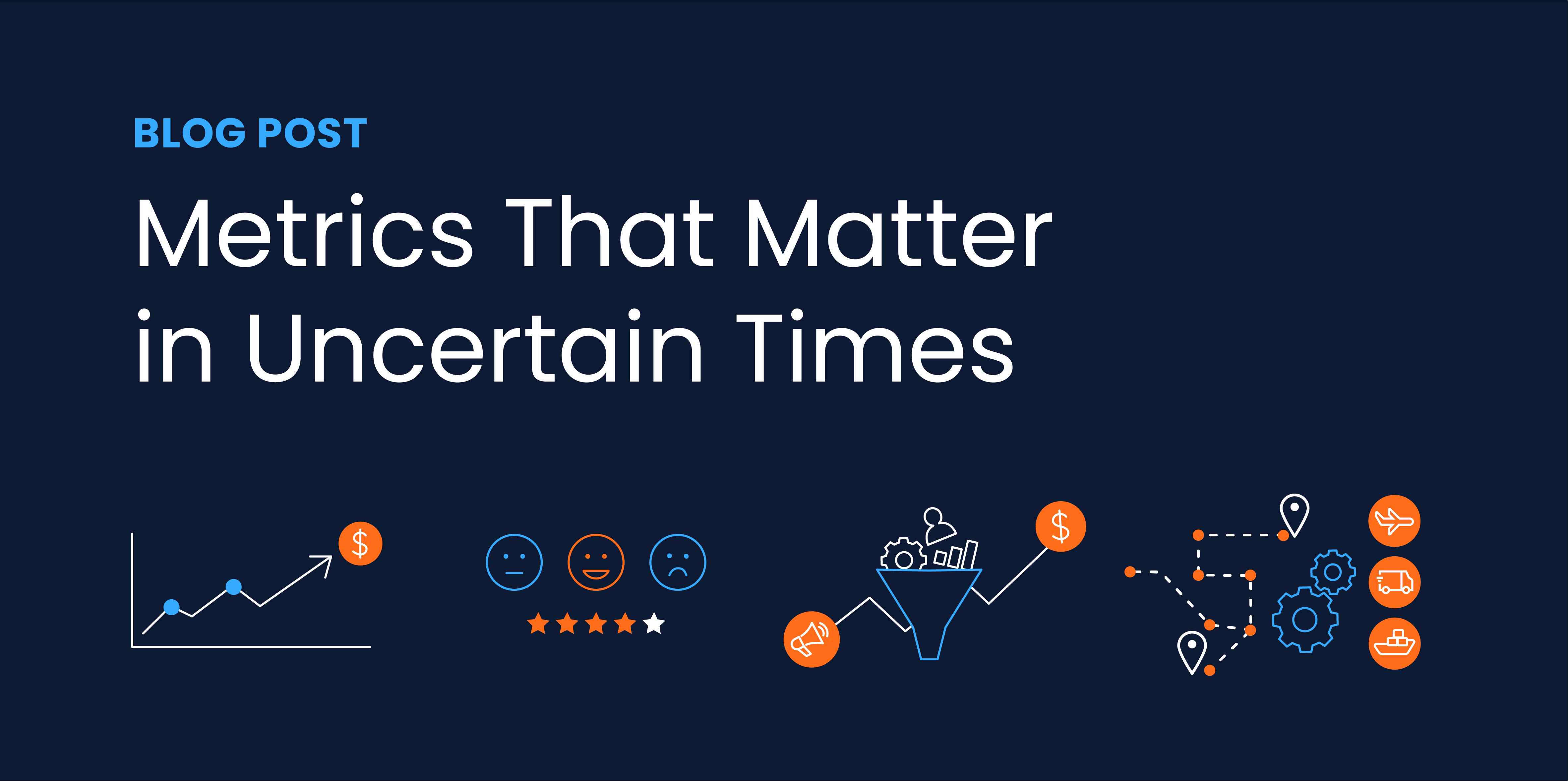The past few years have presented some significant business challenges for distributors. This blog guides the metrics that matter in today’s uncertain business climate.
The best-run and most profitable distributors have metrics that act as guide stars and guard rails for success. Metrics provide a well-defined means of understanding business performance month over month, quarter over quarter, and year over year.
Moving Your Business In the Right Direction with Metrics
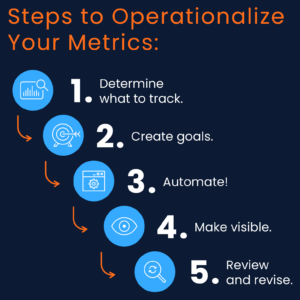 Before we zero in on our discussion about critical metrics, let’s first discuss how to operationalize metrics within your organization. Below is an overview:
Before we zero in on our discussion about critical metrics, let’s first discuss how to operationalize metrics within your organization. Below is an overview:
- Determine what to track. Experts advise selecting 5 to 10 key metrics.
- Use these metrics to set goals to formulate what success will look like. You’ll want to use your past performance or certain benchmarks to develop specific and measurable goals.
- Automate tracking of metrics. Doing calculations of metrics by hand / by spreadsheet is onerous and time-consuming.
- Provide visibility of metrics. Make sure everyone in the organization understands the metrics that impact their area(s) of responsibility to ensure operations are aligned.
- Review and revise metrics as needed.
Categorizing the Metrics That Matter
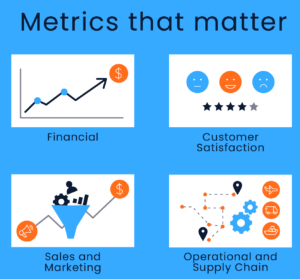 Various types of metrics matter that gauge business performance. Those chiefly used in the distribution sector generally fall into the following categories:
Various types of metrics matter that gauge business performance. Those chiefly used in the distribution sector generally fall into the following categories:
- Financial
- Customer Satisfaction and Employee Satisfaction
- Sales and Marketing
- Operational and Supply Chain Execution
Additionally, metrics to measure efforts that fall into the Environmental, Social, and Governance categories are increasingly gaining focus.
Exploring Metrics That Matter in 2023
So let’s look at the metrics distributors use to gain visibility and greater confidence in steering their business.
Going Beyond Order Volume
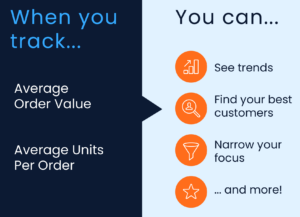 Order volume alone has long been a metric that matters. Tracking it can vary over time due to various factors, including seasonality. If you go deeper, however, to track average order value and average units per order, you can see important trending, discern who your best customers are to focus on, and so much more.
Order volume alone has long been a metric that matters. Tracking it can vary over time due to various factors, including seasonality. If you go deeper, however, to track average order value and average units per order, you can see important trending, discern who your best customers are to focus on, and so much more.
Is the average order value increasing such that customers are buying more from you?
Are average units per order falling? If yes, you’ll want to determine in what categories and why.
Protecting Profit Margins
Distributors have experienced significant cost increases from both suppliers and shippers. Thus, distributors must price inventory at the customer level more than ever before to protect profitability. For distributors new to this approach, it can take some time for sales reps to become comfortable with a data-driven methodology that ensures the right price points are set for every customer to safeguard profit margins.
Keeping a close watch on profit margins is essential for obvious reasons: you can’t afford to sell what you have on hand below certain percentages. But focusing on profit margins can also help ensure distributors prove the benefits of a data-driven intelligent pricing approach to their sales teams.
Keeping an Eye on Inventory Management
Inventory management has been a daunting area for distributors over the past few years. Because lead times for shipments were lengthened significantly in many categories, many distributors erred on the side of caution, pre-ordering stock. As a result, many now face scenarios of excess inventory or inventories that are out of balance with current demand.
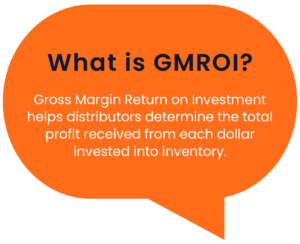 Keeping an eye on inventory turns is vital. However, if you dig deeper, you can understand more than just what products are going out the door, but what impact the sales of this inventory have on your bottom line.
Keeping an eye on inventory turns is vital. However, if you dig deeper, you can understand more than just what products are going out the door, but what impact the sales of this inventory have on your bottom line.
Most distributors are familiar with the granddaddy of all metrics that matter: Gross Margin Return on Investment (GMROI). GMROI entails looking at sales by the cost of goods sold and the average cost of inventory to determine the overall financial return on your stock. From an inventory perspective, visibility into product line pricing and profitability performance is paramount. This will enable you to understand if you have X amount of dollars to invest in inventory, how and where you should make strategic inventory investments.
Evaluating Revenue per Employee
Payroll costs are a big expense category. Technology consulting firm Ultra Consultants says Revenue Per Employee (RPE) can be an essential metric to track. RPE is a valuable indicator of productivity and is simple to calculate (revenue divided by the number of employees) and easy to break down by function. The firm does caution that RPE is highly variable by industry sector. Industry analyst data shows that RPE for the distribution industry range from roughly $1.8 million to $600,000, with the average being around $800,000.
To this end, Ultra experts advise setting a benchmark using your data and utilizing a percentage change in RPE improvement as a goal.
Meanwhile, keeping a tight rein on expenses is important, which can negatively impact RPE. Keeping tabs on expenses can also eliminate surprises on your Profit & Loss statement, bearing in mind that $1,000 in extra expenses will require $25,000 in sales to make up for it.
Managing Your Customer Base
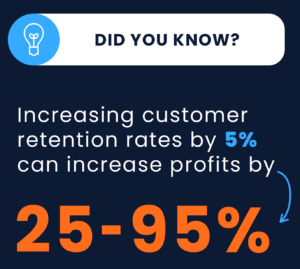 With all of the conversation around metrics that matter, it’s easy to forget about what matters even more than metrics: your customers. Unsurprisingly, their satisfaction is directly correlated to your success. Pay close attention to those customers that have increased their purchase volume due to supply chain issues with their primary distributor. You must price them appropriately, considering they may leave after the supply chain issues subside.
With all of the conversation around metrics that matter, it’s easy to forget about what matters even more than metrics: your customers. Unsurprisingly, their satisfaction is directly correlated to your success. Pay close attention to those customers that have increased their purchase volume due to supply chain issues with their primary distributor. You must price them appropriately, considering they may leave after the supply chain issues subside.
Zeroing in on at-risk customers is a worthwhile endeavor. Research from Bain & Company shows that increasing customer retention rates by 5% can increase profits by 25% to 95%.
Customer churn doesn’t happen overnight. Often, it’s a slow process. Distributors can understand which customers may be getting ready to defect by focusing on customer buying trends. This can present the opportunity to get out in front of customer dissatisfaction issues to remedy the situation and retain their business.
Accounts Receivable (A/R) is another critical area, and order-to-cash is a vital metric to track. However, very few ERP systems keep track of historical A/R. For this reason, it’s essential to keep an eye on outstanding invoices to take the necessary proactive steps to keep on top of receipts.
Navigating Uncertain Times with a Focus on Metrics That Matter
By having the right metrics that matter in place, distributors can better navigate tumultuous times, making decisions and pivoting with speed and conviction to focus resources on the big picture, growth, and paths to progress.
Related Posts
-
See the newly-elected board members for the Worldwide Cleaning Industry Association.
-
Milton Graugnard, EVP of Cajun Industries LLC in Baton Rouge, Louisiana, was elected the 2023…
-
BBI is providing free safety gear to crossing guards across America this school year.
